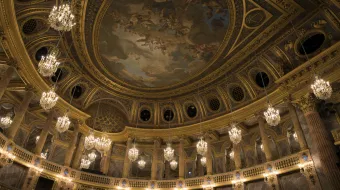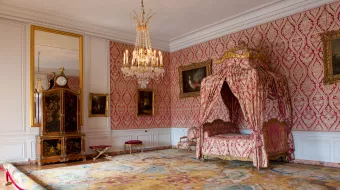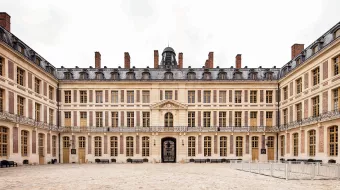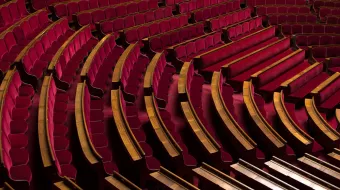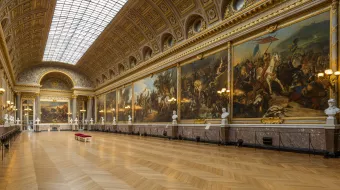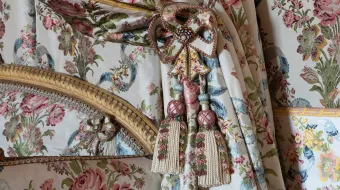A transition room
As the only remnant of the rooms that Louis-Philippe devoted to the French Revolution, the 1792 Room offers the keys to understanding the king’s political and historic project. It marks both the end of a world – the French monarchy fell on 10 August 1792 – and the beginning of a new era full of hopes as well as worries. The European monarchies were united against France, which found within itself the driving forces that would unite to defend it.

The 1792 Room
© EPV/Christian Milet
The Revolution
The main paintings evoke the call to arms to defend “the imperilled nation” - The National Guard of Paris Leaves to Join the Army in September 1792 by Léon Cogniet – and some of the most emblematic battles of the Revolution – The Battle of Valmy, 20 September 1792, by Mauzaisse after Horace Vernet, and The Battle of Jemmapes, 6 November 1792, by Henry Scheffer after after Horace Vernet - and the many military commanders who led France to victory.
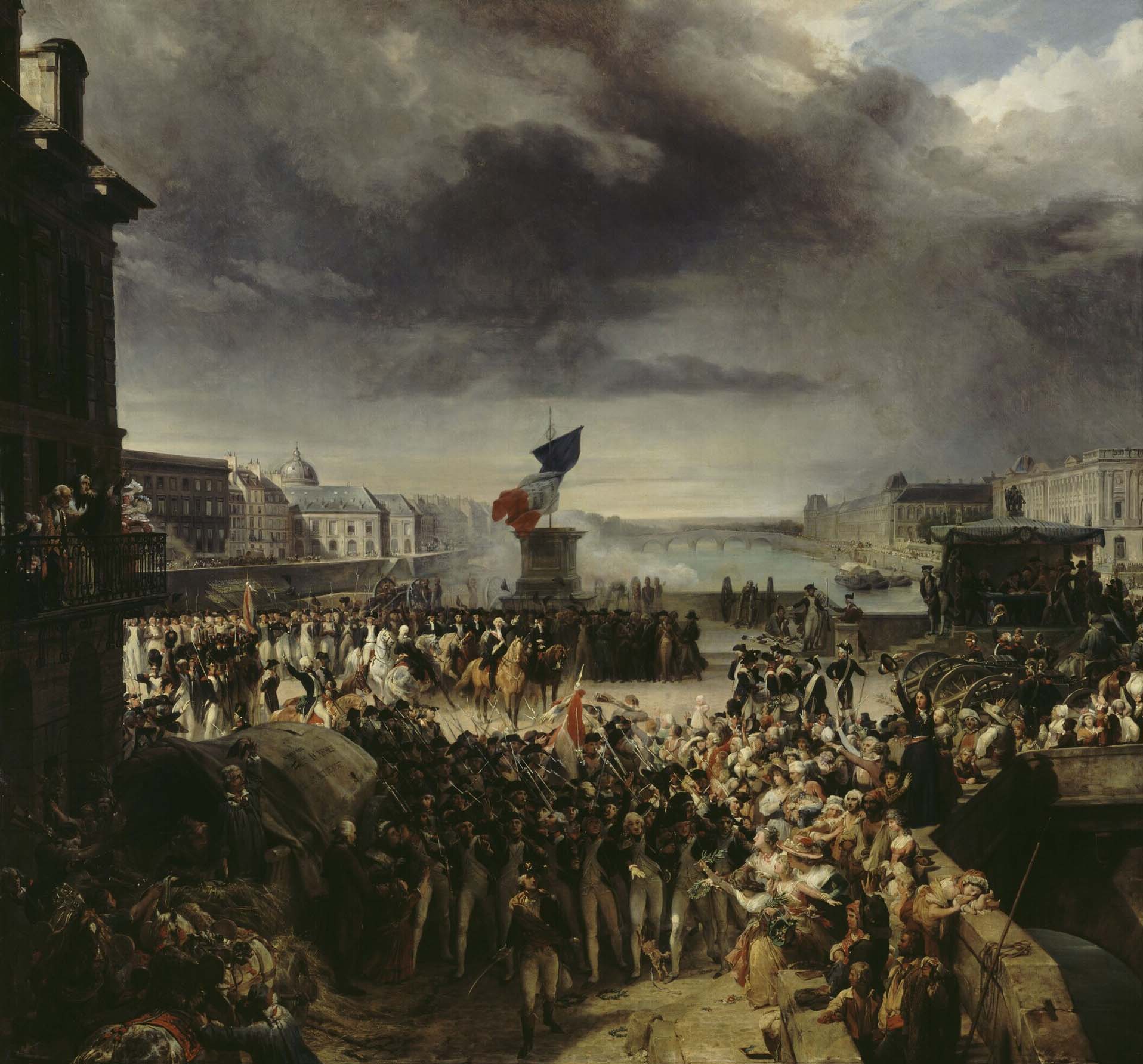
Cogniet, The National Guard of Paris Leaves to Join the Army in September 1792
© RMN-Grand Palais (Château de Versailles) / Philipp Bernard
The Empire
Kellermann, Dumouriez, Luckner, are featured alongside Rochambeau, a veteran of the American Revolutionary War; La Fayette, its most famous combatant; and Louis-Philippe himself, who fought in Valmy and Jemmapes. The portraits of the Empire’s future heroes line the archways around the windows, and Napoleon has pride of place, above the entrance.
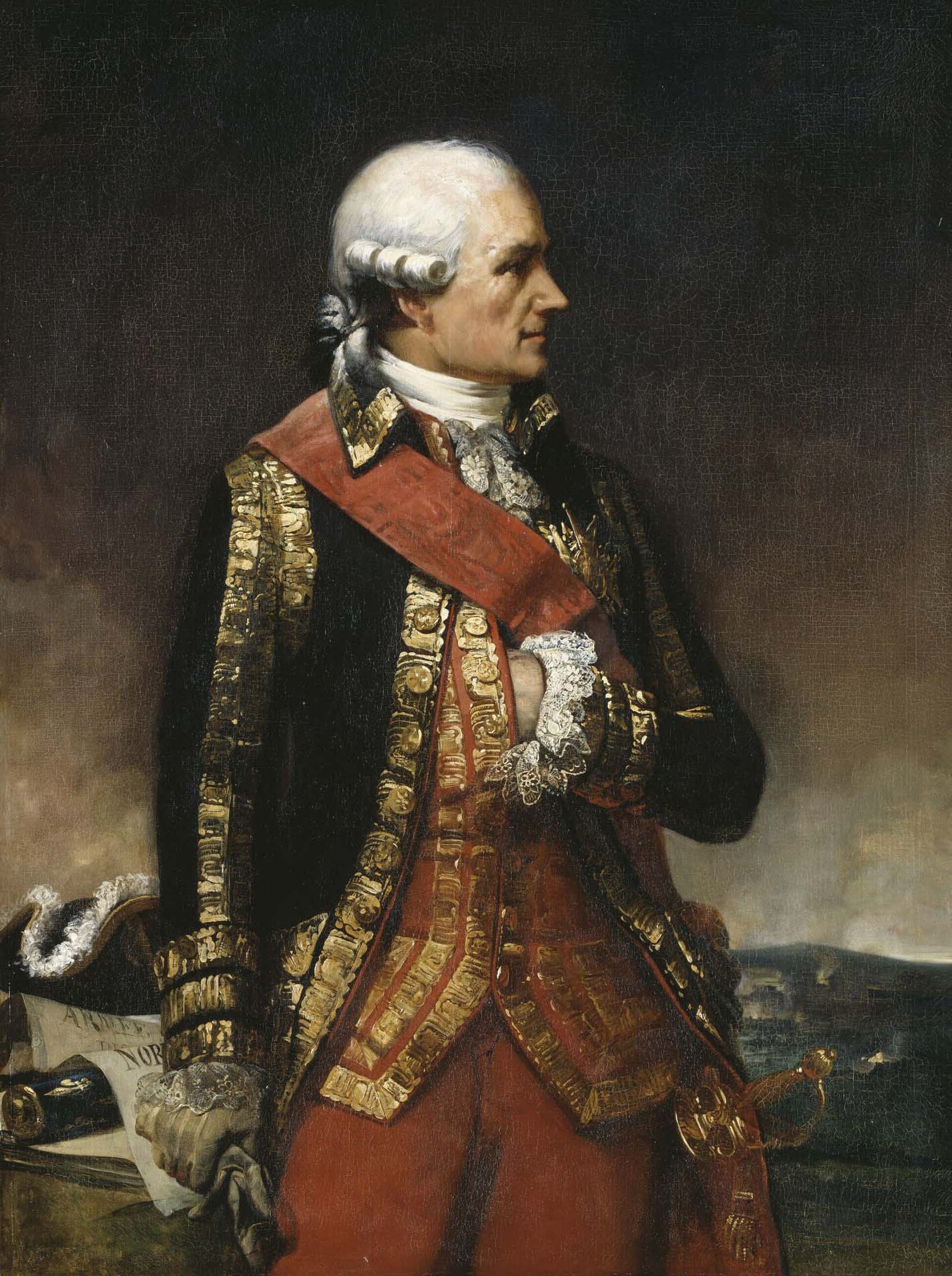
Larivière, Jean-Baptiste-Donatien de Vimeur, Count of Rochambeau
© RMN-Grand Palais (Château de Versailles) / Gérard Blot
The July monarchy
There is a subtle hierarchy between the portraits, with Louis-Philippe presenting himself as a Revolutionary fighter, heir of the Enlightenment and proponent of new ideas.
The 1792 Room presages the messages of the Gallery of Battles and the1830 Room beyond it, in a trilogy that represents the King of the French’s response to the Hall of Mirrors built by his ancestor, Louis XIV, surrounded by the War and Peace Rooms.
the historic galleries also include
- The 1830 Room
- The Gallery of Great Battles
- The Coronation Room
- The Empire Rooms
- The Africa, Crimea and Italy Rooms
- The Crusades Rooms
- The North and South Attics










